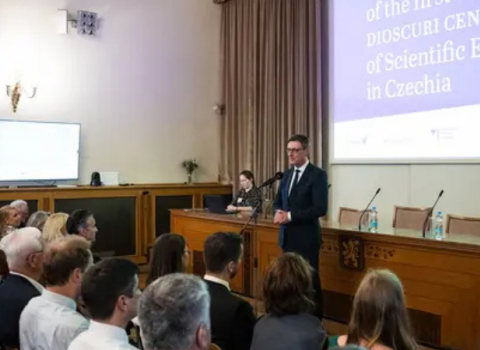The legislation aims to better link science with business, streamline funding and provide a framework for research ethics

Kristina Kallas, Estonia's minister for education and research. Photo: European Union
Estonia is to introduce a new act on research, development and innovation, overhauling legislation dating from 1997 that the government says is “no longer efficient or effective enough in today's circumstances”.
The key goals are to create stronger links between R&D and innovation, to have better coordination between ministries, introduce a new funding system for private and public institutions and - or the first time - enshrine the regulation of ethics in the law.
The government is currently consulting stakeholders on the draft law. It expects the legislation to be adopted by the end of the year and to come into force at the beginning of 2025.
The current act is failing to deliver on today’s needs, said Mariann Saaliste, chief expert at the R&D department of the Ministry of Education and Research. “Although the [1997] law has been constantly updated – it has been amended more than 20 times – the focus of the law has become scattered,” she told Science|Business.
“As a result of many changes, the law is difficult to follow and therefore needs to be organised as a whole,” Saaliste said.
The change has been a long time in the making, with consultations opening in 2020. The process was delayed by parliamentary elections in 2023, pushing back adoption.
A major aim is to create a better flow from research through to translation and to innovation. Until recently, the Estonian government had two separate strategies for research and entrepreneurship, managed by the Ministry of Education and Research and the Ministry of Economic Affairs and Communications, respectively
In 2021, the country adopted an R&D and innovation strategy for 2021-2035 formulated with the cooperation of the two ministries, with the intention of covering the whole value chain.
The new RDI act, which is being drafted to achieve this same objective, involves merging the Research Policy Committee and the Innovation Policy Committee, to form a single committee, with the hope of generating more consistent advice.
At the same time, the Ministry of Education and Research will be given more say over R&D activities that are carried out by other ministries, in fields including energy, housing and agriculture.
There will be different criteria for deciding on the funding of private and public R&D institutes, over and above the baseline budget. As one example of the difference this will make in practice, universities that are centred on learning and knowledge will not evaluated in the same way as private institutions, so that performance-based funding is distributed appropriately.
These changes are intended to maximise the value extracted from private and public R&D investment. “We want the knowledge created in research institutions to serve society more and for universities and universities of applied sciences to contribute more to society and the economy,” said Estonia’s minister of education and research, Kristina Kallas.
“If the state supports private research and development institutions, it should create a wider public good that can also be used by other companies, research institutions and society as a whole,” she said.
Estonia largely punches above its weight in research, development and innovation. While the EU classifies it as a “moderate innovator”, the third category of four, its performance is only just under the EU average and the country is very close to being promoted to a strong innovator on the EU’s Innovation Scoreboard. One of the country’s main weaknesses is government support for business R&D, a shortcoming the new act aims to address.
In a further departure, the new law will codify research ethics, including legislating on open science and how the sharing knowledge and research results should be handled in an ethical and safe way. While this has been present in Estonian research, it is not currently supported by law.
The government is now awaiting feedback before moving the legislation forward.
Once in place, “[It] should support the coherence and effectiveness of research and development and innovation policy, in order to support the achievement of economic and social goals, including changing the economic structure,” Saaliste said.





 A unique international forum for public research organisations and companies to connect their external engagement with strategic interests around their R&D system.
A unique international forum for public research organisations and companies to connect their external engagement with strategic interests around their R&D system.